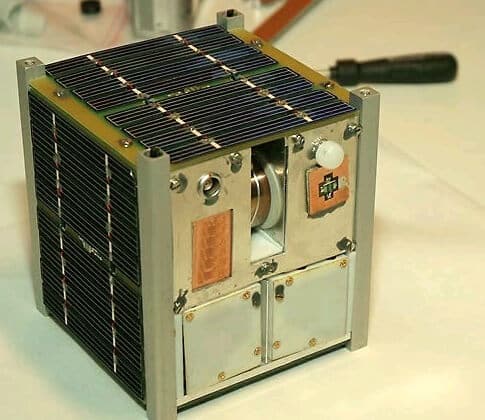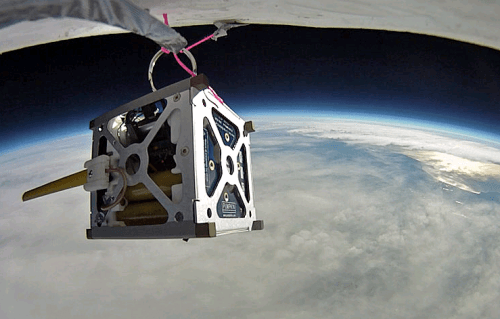The developments smart phones, nano-robots, wearable computing and more, are beginning to affect the field of space engineering as well and allow the entry of small and civilian companies into the field* The article was published in the June 2015 issue of the scientific journal for children "Rosh Gadol"

Where is the face of engineering?
In the early days of civil engineering, which dealt with buildings, bridges, water supply infrastructures, planning machines, engines, and the like, the laws of day-to-day physics and especially gravity, which seemed to bind our feet to the earth until the end of generations, ruled the roost. Since many rivers flowed, the aviation age proved to us that the sky is the limit and after that the space age proved that the sky is only the lower limit. We learned how to harness the force of gravity precisely for the purpose of leaving the Earth's borders and thus we were able to send the first satellites, today after we have learned to minimize devices our satellites are also becoming smaller and more efficient from moment to moment.
The scope of knowledge needed by engineers in various fields has increased to the point of merging with other fields, so that a combination of interdisciplinary engineering research and development has become clear and necessary like no other. This opened up new horizons in the fields of engineering and especially in the field of space engineering which flourishes following the interdisciplinary combinations.
New field of activity - tiny sizes in cubes
The rapid development of smart phones (smartphones), as well as biological nanorobots that are incorporated into wearable equipment that measures our medical condition such as heart rate, blood pressure, diabetes and other important data, has accelerated the development of tiny electronic components as well as a variety of advanced information processing and analysis technologies.
These developments are now being successfully applied in the field of space engineering and especially in the development of tiny satellites. In addition to technology, which plays a key role in the development of tiny satellites around the world, the development of standards (standardization) in the field of tiny satellites should also be noted as a decisive factor that contributed greatly to the development of the field in the last decade. They were Prof. Bob Twiggs (from Stanford University) together with Prof. Jordi F. Soari (from Cal-Poly University) who first claimed the term "Cube-Sat" already in 1999.
A "cube satellite" is actually a tiny satellite, or a typical nano-satellite whose basic external shape is a cube with dimensions of 10x10x10 cm and a weight of 1.33 kg. Several basic units of a "cube satellite" can be attached (one basic unit is also marked as "1U") and grouped together into a larger satellite to perform complex tasks, both in the scientific and commercial fields.
Their relatively low cost (about $100,000 for a basic satellite-cube unit), their short construction time (less than a year) and their low weight (a few kilograms) contributed to the great popularity of the cube satellites. These satellites have become the preferred way in both academia and industry to demonstrate innovative technologies and conduct academic research in space. This is compared to a cost of tens of millions of dollars for larger satellites whose development time may take many years and whose technology is usually outdated and has less performance.
The dizzying rate of development of tiny satellites in general, and cube satellites in particular, has resulted in the launch of hundreds of tiny satellites in recent years, a quantity that is expected to continue to grow in the years to come. This development even led to the creation of a market for products and systems dedicated to tiny satellites whose reliability is constantly increasing, as well as the quality of the commercial and scientific products they produce.
what is the next step?
Smart cell phones today contain a series of advanced components, such as GPS receivers for receiving navigation satellites, magnetometers for measuring the Earth's magnetic field, accelerometers for measuring movement speed, gyroscopes for measuring the angular position of the device itself, radio receivers, barometers for measuring atmospheric pressure, cameras Tiny and also a sophisticated processing unit capable of handling most of the tasks of a larger satellite. All the components mentioned are worthy and necessary candidates for tiny space systems.
Scientists at NASA and GOOGLE even went a step further, and instead of using components from the world of smartphones as systems in a tiny satellite, they decided to use the smartphone itself as a central part of a tiny satellite. The smartphone's processor served as the mission manager on the satellite and the phone's various sensors were used to perform tasks and collect data from space. Three "PhoneSat" satellites were launched already in 2013 by NASA, and were named "Alexander", "Graham" and "Bell" after the famous inventor of the telephone. Later, more "telephone satellites" were launched and the hand is still tilted.
The forecast is that in the next five years over 1,000 tiny satellites will be launched for commercial and scientific missions, both individually in different sizes (2U-8U) and in groups or swarms to perform complex missions.
Below are several examples to illustrate the development of the nanosatellites field:
- The American company Orbital Sciences launched about two years ago 29 tiny satellites in one launch to low satellite orbit (LEO) and another 33 satellites via the International Space Station (ISS).
- The Russian company Kosmotras used the Dnieper launcher to launch 32 tiny satellites into low orbit. The Israeli "Dukhipat-1" satellite, developed at the Herzliya Science Center, was also launched via the Dnieper with 36 other tiny satellites. Dokifat-2 is also expected to be launched together with a swarm of 50 tiny satellites (50QB) in one launch.
- About a year ago, Planet Labs launched 28 tiny satellites (U3) for continuous photography of the Earth from the International Space Station (ISS) and they intend to launch 100 more such nano-satellites to cover continuous photography of the Earth.
- Progress is also evident in launching tiny satellites at low prices (hundreds of thousands of dollars). For example: the American company Interorbital Systems from California conducted an experiment with a launcher that can carry dozens of nanosatellites in one launch at a target price of $38-13 per nanosatellite, a very low price compared to an accompanying launch for an especially large satellite when it can be launched into a precise orbit in accordance with the requirements of the tiny satellite developers. Israel's aerospace industry is also integrated in this field, along with the Technion and universities abroad.
- Another area created as a result of the success of tiny satellites is the "internet from space". The idea is to enable internet, at high rates, with the help of a swarm of tiny low-altitude (LEO) satellites that will reach all the places in the world that currently do not have access to the internet, as well as to solve the "time lag" problem that is created by the common use today of the usual communication satellites that are in geostationary orbit at an altitude of 36,000 K "M. The duration of the transmission through the high satellites is about a quarter of a second, to which is added the time delay through the wired network. "Time lag" is a limitation when a video transmission or conversation is needed in real time and also when extremely fast responses are required, such as performing electronic trading operations on stock exchanges around the world.

A number of companies are currently competing for the establishment of the infrastructure for the "Space Internet", with all of them basing their solution on launching swarms of small and tiny satellites to relatively low altitudes (up to about 1,000 km) in order to solve the issue of the "time lag" which will be reduced to a few thousandths of a second as well as to supply Continuous internet anywhere in the world. The main companies in this market today are:
- The Virgin Galactic company in collaboration with the "Qualcomm" company, created the project One "Web" and plan to launch 648 tiny satellites at a height of 1,200 km above the earth to create the space internet.
- The company Space X intends to launch a swarm of 4,000 tiny satellites to an altitude of about 1,000 km to create its space network. GOOGLE also joined the internet race and invested about a billion dollars in the space internet project of Space X.
- The Iridium company, which already has 66 active satellites of the previous generation in space, is now planning to develop a swarm of state-of-the-art tiny satellites under the name Iridium Next which will be extended to space internet. And the O3b company also entered into a partnership with the One Web company and has already launched 12 low-altitude satellites (Leo).

What is being done in Israel:
- QB50 - the Israeli "Dokifat 2" is one of the satellites from a swarm of 50 nanosatellites for the study of the thermosphere - a project of the European Research Authority. Expected launch in 2016.
- Samson - a band of 3 nano satellites (3U) of the Technion whose purpose is to locate ships at sea and also to serve as a basis for a series of projects in the scientific field. Will be launched during 2016.
- I-Train - a project of a fleet of 5 nano-satellites in which five scientific centers will be integrated under the guidance of the Science Center in Herzliya and with the assistance of the Aerospace Industry to carry out a series of technological and scientific tasks from space.
- In addition, a nano satellite of Ben-Gurion University (BGU Sat) and a technological satellite of the aerospace industry "Incline" are planned for launch in the coming year. Apart from this, there is a series of small satellite projects that are in the planning and fundraising stages, such as the "Gideon" of Elbit Systems and the "Lite Sat" of Rafael.
- U-Unit
- Professor Haim Ashad - Chairman of the Space Committee at the National Research and Development Council. The article was published in the June 2015 issue of the scientific journal for children "Rosh Gadol".
More of the topic in Hayadan:
launchers for tiny satellites
The age of tiny satellites20 years since the launch of Ofek 3, Israel's first military observation satellite - an interview with the father of the program, Prof. Haim Ashad
Blue and white in space - key people in the Israeli space program

4 תגובות
Tam's question: it can be assumed that there are other American, European, Chinese, etc. communication companies that would also like to launch a swarm of thousands of nano satellites into space and that three countries would like to develop a communication network to make spy satellites more efficient and faster. All of these already join the thousands of communication satellites that are at higher altitudes than the ground. How will a spacecraft manage to avoid all tens or hundreds of thousands of these halos when it is launched into space?
Pretty
Yes, a space article!